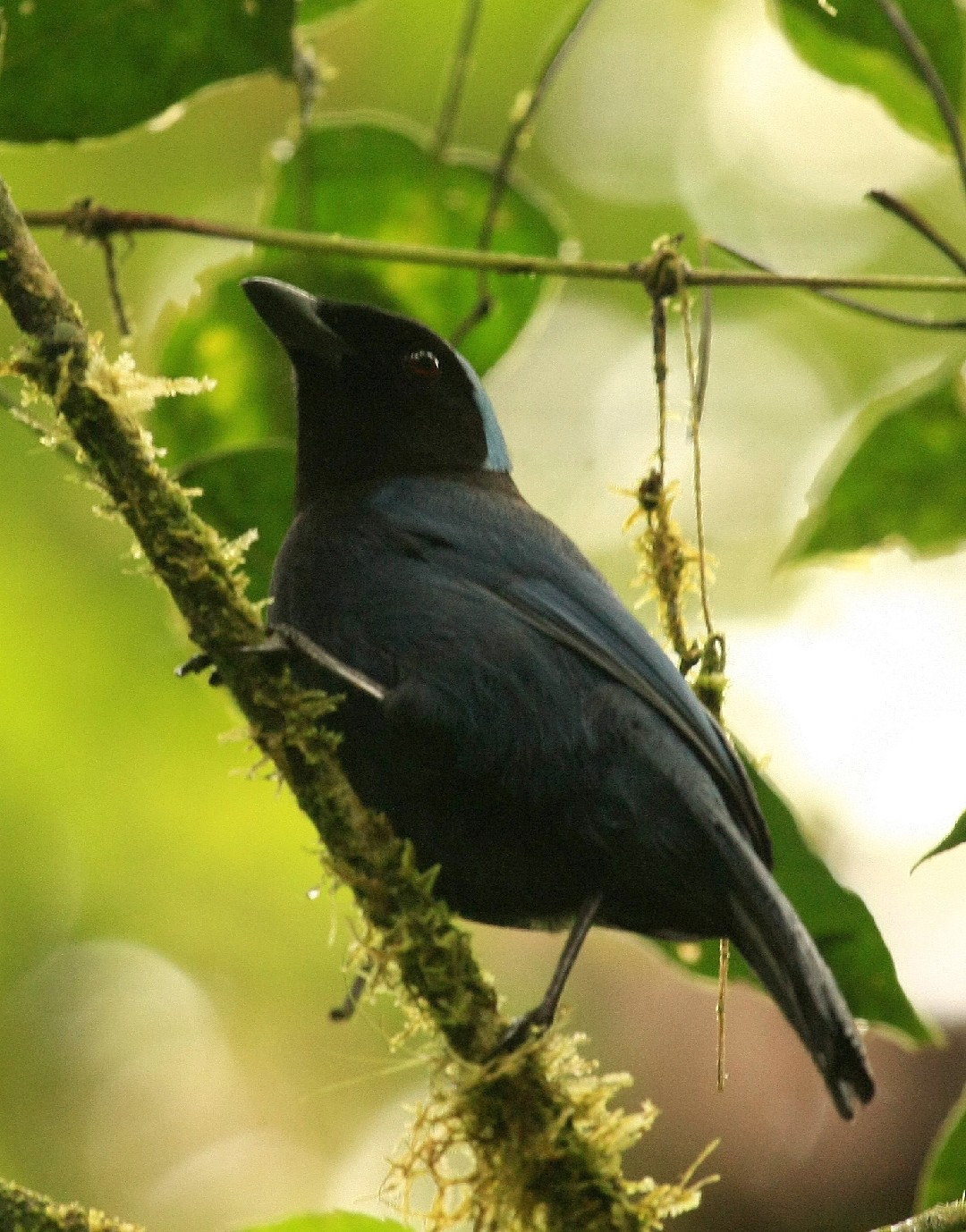Azure-hooded Jay
A species of Cyanolyca jays Scientific name : Cyanolyca cucullata Genus : Cyanolyca jays
Azure-hooded Jay, A species of Cyanolyca jays
Botanical name: Cyanolyca cucullata
Genus: Cyanolyca jays
Content
Description General Info
Description
The azure-hooded jay ranges in length from 11 to 12 inches (28 to 30 cm), and it tends to weigh 35.2 ounces (1,000 g). Its large size and frame help the bird manage the large amount of flying it does. The adult is dark blue with black on the head and upper chest, while the rear of the crown and nape, or back of the neck, are sky blue with a white border. The legs and bill are black and the eyes are dark red. Both sexes are similar in appearance. Juveniles are duller than adults and their sky blue hood does not possess the white bordering. Its voice has been described as a loud and bright eihnk-eihnk that is typically repeated four to five times. It is also known to repeat a nasal ehr-ehn or eh’enk noise twice and give off a low, gruff, hard cheh-r. The alarm and flock-social calls of this species, characterized as a reek! sound, are "nasal, querulous, and upwardly or double inflected." 
Size
31 cm
Nest Placement
Tree
Feeding Habits
Azure-hooded Jay primarily consume an omnivorous diet, which includes berries, seeds, and occasionally small, dead animals. Their feeding behavior involves foraging through the foliage. Unique adaptations or preferences have not been specified.
Habitat
The azure-hooded Jay typically inhabits montane evergreen forests, where it can be found in both the dense interior and along the forest edges. This species is also known to frequent pine-evergreen forests, which offer a mix of coniferous and broadleaf vegetation. The preferred habitat is situated in broader mountainous regions, characterized by elevation and the presence of rich, evergreen vegetation, providing both cover and foraging opportunities.
Dite type
Omnivorous
General Info
Feeding Habits
Bird food type
Behavior
This corvid is known to join mixed-species flocks with other species including unicolored jays and emerald toucanets. It is also known to travel in groups with two to ten other azure-hooded jays. It is a skulking and secretive species, rarely coming out into the open. Because of this habit, the bird is extremely difficult to observe in the wild and not much is known about its ecology. Mates are known to preen each other, a process which entails one bird bending over in front of the other and tugging on its throat feathers. The feathers of the crown are often moving swiftly, and it is believed that the condition of a mate can be determined by this movement. Like other jays, this species is likely extremely intelligent. Similar species are known to use ants to keep their feathers clean, store seeds and nuts for later consumption, and use their toes to hold food. However, due to its secretive nature, these characteristics have not yet been observed in the species. The bird's bright plumage makes it easy for predators to find this species. Whenever the jay feels threatened, it gives off a warning alarm call. 
Distribution Area
This species is known from Costa Rica, Guatemala, Honduras, southeastern Mexico, and western Panama. It lives in humid evergreen forests that are sometimes interspersed with pine trees. It can be found at the edges of these forests typically in the middle and higher levels within these trees. It is also normally found only where cloud forest is uninterrupted. 
Species Status
This jay is treated as a species of Least Concern, or not threatened with extinction, by BirdLife International due to its large geographical range of about 42,500 square miles (110,000 km), population which, while unsurveyed, is believed to be above 10,000 individuals, and lack of a 30% population decline over the last ten years. However, the azure-hooded jay is uncommon in some parts of its range. It is also believed that deforestation may have an effect on this bird. 
Scientific Classification
Phylum
Chordates Class
Birds Order
Perching birds Family
Crows and jays Genus
Cyanolyca jays Species
Azure-hooded Jay 